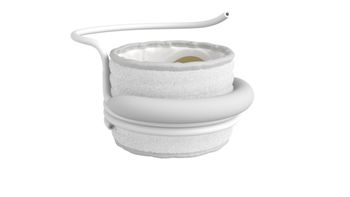
Medicine non-adherence can be solved at the point of prescribing - with the right tech
Key Takeaways
- Cost is the primary barrier to medication adherence, with significant drug price increases exacerbating the issue.
- E-prescription software can help providers identify cost-effective and available medication options during patient appointments.
Patient challenges could be addressed at the time a provider writes a prescription - if providers and their staff are equipped with the right technology and information.
A national survey found that
Unfilled
But even the 67% of people who do fill prescriptions don't necessarily take the medicine as directed. According to
I have been working in the healthtech space for years. These challenges could be addressed at the time a provider writes a prescription - if providers and their staff are equipped with the right technology and information.
Cost: This is the biggest barrier to medicine adherence. Price transparency has been top of mind during election season and the ongoing legislation with Pharmacy Benefit Manager (PBM) reform. According to the federal government, "Over the period from January 2022 to January 2023, more than 4,200 drug products had price increases, of which 46% were larger than the rate of inflation. The average drug price increase over the course of the period was 15.2%, which translates to $590 per drug product." In office, providers can leverage their e-prescription software to view the cost of a specific drug across pharmacies, and notify a patient if, for instance, it would be less expensive to order a drug by mail or at a place other than their usual pharmacy. Often these price differences are striking. Most providers are already equipped with e-prescription software, so this doesn't require additional technology - but time constraints and information overload in their current software sometimes make it difficult to have the cost conversation with patients. While pricing information won't eliminate all cost concerns, reducing the cost of medication could go a long way towards improving adherence.
Availability: Providers can use their e-prescription software to see which pharmacies have a medication in stock. If the answer is "none," a provider can immediately pivot to a substitute medication that's accessible to the patient. Again, this can be done during an appointment by a provider or their staff in less than a minute.
Transportation: If patients don't have reliable access to transportation or have mobility issues, mail-order pharmacies can ensure medication is delivered directly to them. As a bonus, often mail-order pharmacies (affiliated with health plans or hospitals) have lower prices. Most patients won't share their inability to get to the pharmacy unprompted - they need to be asked. Tracking Social Determinants of Health data in real-time in the EHR can help avoid an uncomfortable conversation with the patient, prompting providers to fill prescriptions by mail order whenever possible.
Memory: It's very simple for providers to send automated reminders to patients about fulfilling
In 2021 (latest figures available), the rate of electronic prescriptions in the U.S. was
Newsletter
Stay informed and empowered with Medical Economics enewsletter, delivering expert insights, financial strategies, practice management tips and technology trends — tailored for today’s physicians.








